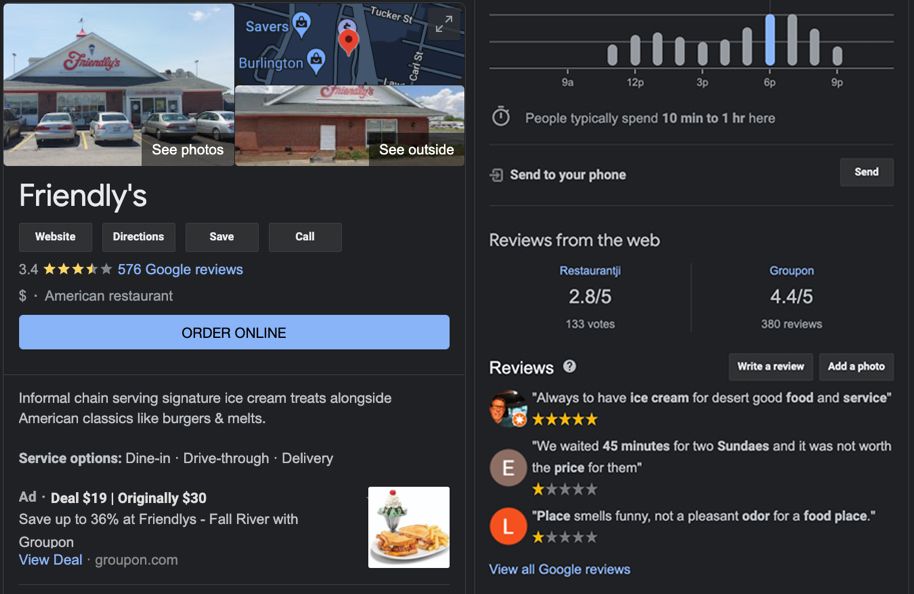Broadly, customer perception is how your customers and potential customers view your organization. It’s how they feel about your brand and what they think it represents. It’s how well they think your products, services, and support fill the need your organization is trying to fill. It’s all of these.
Customer perception in the 21st century is so important, in part, because of the number of social media platforms that can shape perception and how quickly that information travels and becomes available to others.
Customer reviews, social media presence, and customer support can affect every step your customer makes. This can either make or break customers' decision to choose your brand as a solution to their needs.
There are steps you can take to identify underlying pain points in order to improve customer experience, increase their loyalty, and retention. In this article, we’ll take a look at factors that shape customer perception and how your brand can influence the way your customers see you.
As the old saying goes, “Perception is reality.” So let’s get started.
What factors shape customer perception?
Customer perception, when measured properly, is outside-in. Meaning that customer perception is entirely a product of factors external to your organization. Your staff, executives, and internal stakeholders can impact customer perception. But they cannot define it.
The most important thing that your business should focus on is value alignment and generating positive trust signals to your customers. This will strongly impact the actions that your customers will further take.
Your marketing is just a part of what others perceive. It’s what you want your customers to think. But company actions speak for themselves and there are multiple ways how your customers will express their opinion, forming an image of your brand.
Customer reviews
Social media platforms and customer review sites can play an outsized role in customer perception. When potential customers are in the consideration phase of the sales funnel, Google is often the most important tool in their research arsenal. So, what comes up when a potential customer Googles your company?
The first thing they’ll likely see is your Google listing with pertinent details – business details, location, hours, website, contact info, and reviews – links to both Google’s own reviews and other popular review sites. Google houses an incredible amount of data, and that’s on full display here.

The customer reviews stand out here. When consumers click to explore more reviews, the first instinct for many is to read the negative ones first. It’s certainly not ideal for the business, but it’s 21st-century human nature to want to know what a company is doing poorly before diving into the 4 and 5-star glowing reviews.
Believe it or not, the poor reviews aren’t all bad, though. They give a certain authenticity to the rest of the reviews. If a review page is chock-full of positive reviews, it can raise a red flag. We’re humans, and we’re skeptical if something seems too good to be true. This is true for customer reviews. No matter the business or the industry, if you do enough business with enough people, there will eventually be one that has a poor experience. Or maybe an experience that they simply perceived as poor. Again, perception is reality.
Another great idea is to change your point of view. Consider how your suppliers perceive you as a customer and it might give you a good sense of how the processes within your company are perceived from the outside.
Social media
Facebook and other social media outlets have also grown to be an important platform for consumer research and information. Unless you moderate your business’s comments and posts, Facebook offers another unfiltered view of not only what your customers are saying, but also how you’re responding to those comments, questions, and concerns. For better or worse, all this information plays a role in how your business is perceived.
Customer support
Customer support is a cornerstone piece of the customer perception puzzle.
Customer support is now a very public thing, with customers frequently airing their grievances on social media. According to Hiver’s research, 89% of respondents will share their negative customer service experiences in public. How you’re handling these situations can have a huge positive or negative impact on the overall customer perception.
How to improve customer perception?
You’re on board with the concept of customer perception, why it’s so important, and you’ve put together a strategy to measure, analyze, and understand your data and insights.
The next step is to outline some initiatives to improve perception. Regardless of whether you’re at the Bank of America or Starbucks end of the NPS spectrum, there’s always room for improvement. But how?
1. Reward loyalty
Consumers of every demographic appreciate it when their loyalty to a brand or an organization is recognized and rewarded. It shows them that the relationship is more than transactional and that they are valued.
This doesn’t necessarily mean you need to architect a complex rewards program. Start small and keep it simple. You can host giveaways, offering your customers something that will remind them of your core values. Carefully designed company shirts are a great place to start. Design something fun that shows off your company and/or product in a way that your customers will love. Think of it more as a brand awareness tactic than a sales and marketing tactic.
2. Respond to feedback
Respond to feedback – even to the bad one. As we mentioned above, a healthy portion of the feedback companies get comes via social media, which means it’s likely public. Take time to appreciate the positive feedback and show genuine willingness to solve the negative so your angry customers know you’re listening.
Take a look at the example from a home heating company.
Pioneer Oil has responded to questions they’ve received and made it clear that they won’t allow customers’ biggest fear – a home without heat – to come to fruition.
They’re not responding to negative feedback, per se, but they’re addressing a common concern and working to alleviate stress. Although certainly not their primary goal, this will do wonders for their customer perception. To manage client feedback, you can also use social media customer service software that will help your support team to solve issues more effectively.
3. Share the wins
If you’re taking the time to collect, analyze, and integrate customer feedback, find a creative way to share the wins in your messaging and marketing material. Your customers’ unfiltered reviews and words speak volumes and can be more impactful than even the most creative marketing messages.
If you’re planning on potentially sharing the reviews that you’re soliciting, be sure to disclose that upfront. You should also reserve the right to make minor spelling, grammar, or wording changes as long as it doesn’t change the tone of the review. For instance, if you refer to your customers as patrons, you’re OK to make that edit.
How can you measure customer perception?
Perception and sentiment should be measured – quantitatively, qualitatively, or both – and analyzed on an ongoing basis. It’s a commitment that will pay long-term dividends. You’ll understand how your target audience feels about your organization, its products, and its service. They’ll tell you what’s going well and, equally important, what’s not going well. Spoiler alert: it’s not always going to be positive.
Perception can be measured in many ways. Here are a few popular options.
Net Promoter Score (NPS score)
This is arguably the most common method of measurement across industries. If you’ve ever taken a survey that includes the question, “How likely are you to recommend [company] to a friend?”, then you’ve participated in an NPS survey.

Respondents are asked to answer this question on a scale from 1-10. Those who answer with 9 or 10 are considered promoters; scores of 7 or 8 are passive; scores below 7 are detractors.
NPS scores, which can range from -100 to 100, are calculated by subtracting the percentage of detractors (9-10) from the percentage of detractors (0-6). The higher your NPS score, the better your customer perception.

This range is on full display among some of the biggest brands. Among some of the largest, Starbucks leads the way with an impressive score of 77 while big financial institutions like Santander and Bank of America are at the back of the pack with scores of -24 and -25, respectively.
A quick look at their Facebook posts/replies highlights this gap even though both posts are innocuous.

Monitoring online mentions
Social media platforms have given consumers a real voice when it comes to their experience and their perceptions. Whether they’re sharing an experience on your company’s Facebook page or tagging airlines on Twitter to complain about flight delays, consumers have a voice and an audience on social media.
For larger organizations, regular manual monitoring of social media mentions across a handful of platforms is onerous. Luckily, there are software solutions that will aggregate all this daily and provide a report of results.
This data will be much more qualitative as opposed to the quantitative data that NPS surveys will produce. They’re both important pieces of the customer perception puzzle.
Customer surveys and interviews
The shortest distance between two points is a straight line, and when it comes to understanding customer perception, surveys and interviews are often that straight line.
Online surveys can be completely tailored to what you’re trying to learn. Maybe it’s a “how did we do?” survey after a transaction, or “how is this product working for you?” to understand product usage and sentiment. When they’re short and sweet, many consumers are happy to complete surveys, especially when all they need to do is select an option from a range – think one to five or “strongly disagree” to “strongly agree.”
The NPS question above can even be added to the end of these short surveys. You may be amazed at the insights you can gather from these surveys. Many online form builders can host surveys, with survey tool options and costs ranging anywhere from hundreds to hundreds of thousands per year.
Similarly, customer interviews can yield fantastic insights, especially when you have a skilled interviewer or moderator conducting the interview. The moderator’s role is important to keep the interview on track and to extract the most important insights.
Many companies will hire a third party for conducting the interviews. This way you can ensure that any bias in how the questions are posed or in how the conversation is directed is removed. These interviews can be conducted either one-on-one or in small groups. There are pros and cons to both.
Interviews are more time-consuming than surveys, so consumers often expect an incentive in exchange for their time. It doesn’t have to be a high dollar value, but you’ll often see a better response rate if you’re giving something in return.
This is a marathon, not a sprint
Measuring, understanding, and improving customer perception requires a long-term strategy if this is to pay dividends. Make it an ongoing part of your business plan. Just like they say about beginning to exercise – a year from now, you’ll wish you started today.
As this becomes an ongoing process, you’ll recognize changes over time, and you’ll be able to integrate solutions or ramp up what’s going well.
Remember, it’s true that perception is a reality in this instance. Utilizing new tools and taking an outside-in approach to understanding and measuring customer perception will set your company up for long-term success. It’s a win-win.
This is a guest post by Jeff Barnett.
About author:
Jeff Barnett is an active business researcher and an independent writer. He has over 3 years of experience in creative copywriting, specializing in marketing. He loves to write and share insights about what he'd learned in his years as a professional writer.
✍️ Want to write for us? Check out our guest blogging guidelines here.




